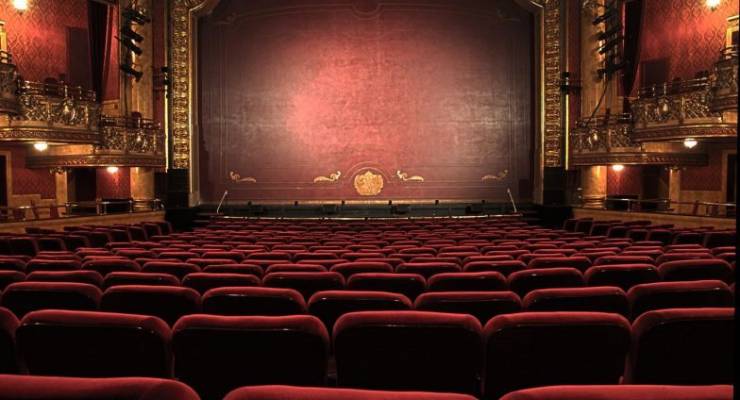
Treasurer Josh Frydenberg’s pre-election budget provides a $393.7 million boost for the arts and communications portfolio but simultaneously demonstrates the Morrison government’s lack of interest and understanding of the sector.
Arts and culture contributes $50 billion to Australia’s GDP annually (based on figures for 2012–13 provided by the Australia Council) but since coming to power in 2013, successive Liberal-National Coalition governments have consistently failed to create a national cultural policy to support and grow the sector and magnify its cultural and economic impact.
Instead of putting money where it is desperately needed — including $2 million for the Regional Arts Fund and $25 million for the Australia Council, to support individual artists and the small to medium sector — the government continues to fund its culture wars.
Following on from last year’s federal budget, which saw $48.7 million allocated over four years to celebrate the 250th anniversary of Captain Cook’s voyage, the 2019-2020 budget includes $800,000 for “additional support for Australia Day activities and funding to undertake a review of the National Australia Day Council’s programs” — this at a time when the date of Australia Day has become increasingly divisive and contentious.
The sector’s response to the budget has been subdued.
Shelagh Magadza, Executive Director of the Chamber of Arts and Culture WA, told Artshub: “In the context of a vote buying budget, this is clear statement that arts and culture are not seen as ballot box issues. With the exception of the Contemporary Music fund, there is nothing that provides a meaningful boost for the sector based on a longer term vision. This illustrates the ongoing challenge facing us — how do we ensure arts and culture is on the agenda for the coming election and beyond.”
The Australian Major Performing Arts Group (AMPAG) criticised the government’s ad-hoc approach to the arts in a statement released today (3 April).
“AMPAG has consistently advocated on the importance of arts infrastructure, of touring to regional access, of direct investment in Indigenous performers and of programs to support artist access to new markets. The Government commits to these strategies for the contemporary music sector. AMPAG supports the growth of independent artists and small to medium companies and applauds this initiative. However, these strategies should be deployed in the context of a vision for the entire arts industry,” said Bethwyn Serow, Executive Director, AMPAG.
“AMPAG welcomes funding in individual projects, for the Bundanon Trust Art Centre and in Australia’s new writing theatre, the Griffin Theatre. Along with an investment in the Huon Valley art installation, government recognises the important contribution of the arts to cultural heritage and tourism activity. These announcements represent new investment in the arts, which we whole heartily applaud, but we are reticent about the ad-hoc approach taken by government,” Serow added.
Executive Director of the National Association for the Visual Arts (NAVA), Esther Anatolitis, said: “This budget makes no new investment in Australia’s artists. This budget makes no commitment towards redressing the debilitating cuts that are damaging the arts industry, making it harder and harder for artists to sustain careers.
“Artists’ average incomes are falling, the numbers of visual artists and craft practitioners are declining, it’s taking longer for artists to become established in their careers, and the gender pay gap is worse in the arts than in any other industry, according to Australia Council research.”
Reflecting on the $7.1 billion budget surplus announced by the Treasurer last night, Anatolitis added: “I’m frankly astounded that urgent investments in the arts — $25m per year for the Australia Council and $2m per year for the Regional Arts Fund — have been ignored when both have consistently been advocated by industry leaders all over Australia.
“Both of these vital industry development investments could easily have been funded without even having to touch that headline $7.1bn figure,”she said.
Criticisms aside, the budget offers some hope for the cultural sector, including live music, cultural tourism and capital works for a handful of major cultural institutions.
To read the rest of this article please head to ArtsHub, Australia’s leading online resource for arts professionals. Richard Watts is the National Performing Arts Editor at ArtsHub.







While I agree with, and endorse, all of the analysis above, I feel the need to observe that it somewhat fragments the “Arts” Industry.
To the best of my knowledge that $50billion also includes income generated by Australian based film and television production. It also includes productions mounted by offshore producers on a free standing basis, or in collaboration Australian broadcasters and producers.
Australia has a long history of exporting film and television, which seems to be overlooked.
Much of the visual and performing arts are based on a renewable fountain of inspiration and talent and are therefore more sustainable.
Film and television rely on tradecraft, technical skills and artisanry which are seeing very little in the way of formal training provision for the future.
So we are now seeing an attrition rate in this skill base which will inevitably erode the industry capacity to service Australian production requirements, or contribute to the export capability of this valuable and important branch of the “Arts”.